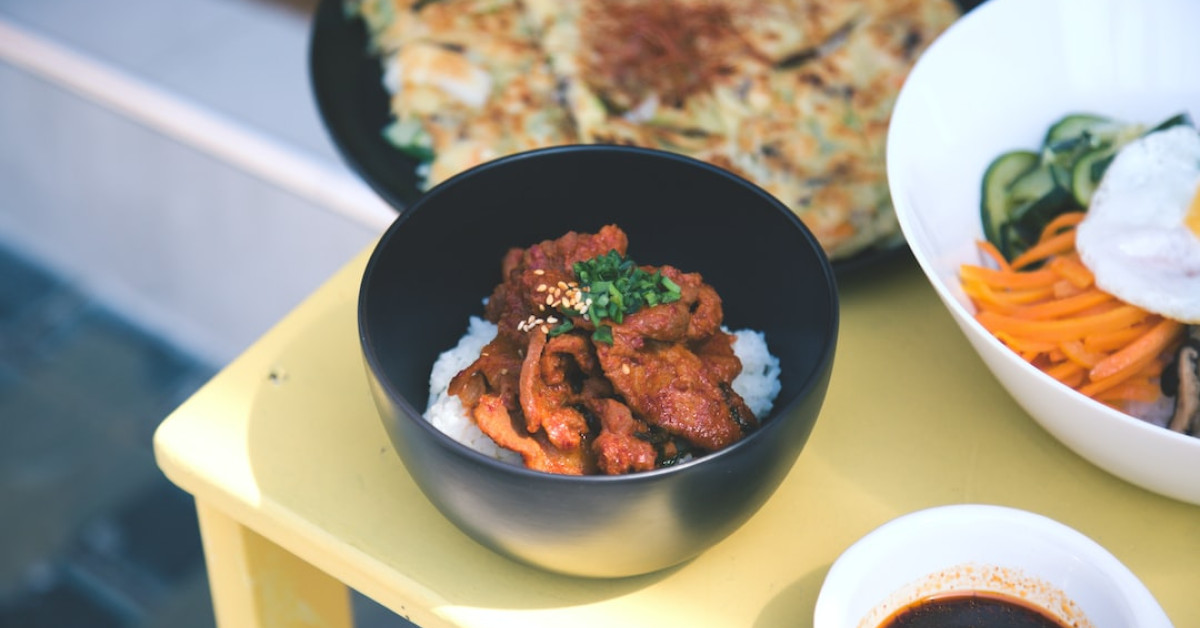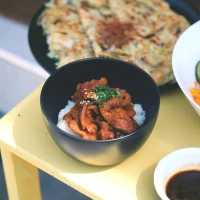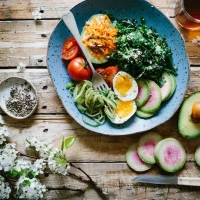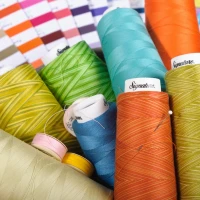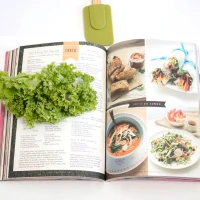If you’re a fan of Filipino cuisine, then you’ve probably heard of laing. This traditional dish from the Bicol region of the Philippines is known for its rich flavor, creamy texture, and spicy kick. Made from taro leaves cooked in coconut milk and seasoned with spices, it’s a dish that leaves a lasting impression. In this article, we’ll take a deep dive into the world of laing, exploring its history, ingredients, cooking methods, and variations. So let’s get started and discover how to make the ultimate laing recipe!
A Brief History of Laing
Laing is a dish that originated from the Bicol region of the Philippines, which is known for its spicy and rich culinary traditions. The name “laing” is derived from the Bicolano word “ginataan,” which means “cooked with coconut milk.” Traditionally, laing was made using only taro leaves, coconut milk, and spices like garlic, onion, and ginger. However, over time, variations of the dish have emerged, incorporating additional ingredients like shrimp, pork, or dried fish.
Key Ingredients for a Classic Laing Recipe
To make a classic laing recipe, you’ll need a few key ingredients that are commonly found in Filipino households. Here’s a list of the main ingredients:
-
Taro Leaves: The star ingredient of laing, taro leaves give the dish its unique flavor and texture. These heart-shaped leaves are known for their slightly bitter taste, which pairs perfectly with the creamy coconut milk.
-
Coconut Milk: The creamy base of laing is made with coconut milk, which adds richness and a hint of sweetness to the dish. To extract coconut milk, freshly grated coconut is soaked in water and then squeezed to release the flavorful liquid.
-
Pork or Shrimp: While the traditional laing recipe is vegetarian, many variations include meat or seafood for added flavor. Some people prefer to use pork belly, which adds a savory element to the dish, while others opt for shrimp to create a seafood twist.
-
Spices and Seasonings: Garlic, onion, ginger, and chili peppers are the essential spices used in laing. These ingredients provide a robust and spicy kick to balance the creaminess of the coconut milk.
-
Shrimp Paste or Bagoong: A common ingredient in Filipino cuisine, shrimp paste or bagoong is sometimes added to enhance the flavor of laing. It offers a salty and umami taste that complements the dish beautifully.
-
Cooking Oil: A small amount of cooking oil, usually vegetable oil, is used to sauté the spices and meat before adding the coconut milk. This step helps release the flavors and aromas of the ingredients.
Cooking Methods for Laing
There are two main methods for cooking laing: stovetop and oven-baked. Each method produces delicious results, but the choice ultimately comes down to personal preference and the equipment available in your kitchen.
Stovetop Method
The stovetop method is the most common way of cooking laing, as it requires minimal equipment and provides consistent results. Here’s a step-by-step guide to cooking laing on the stovetop:
-
Heat a large cooking pot or wok over medium heat. Add cooking oil and sauté garlic, onion, and ginger until aromatic.
-
If using pork, add the thinly sliced pork belly to the pot and cook until browned. If using shrimp, skip this step.
-
Add the taro leaves to the pot and stir them continuously for a few minutes. This helps soften the leaves and remove any bitterness.
-
Pour the coconut milk into the pot and bring it to a gentle simmer. Let the mixture cook for approximately 30-40 minutes, or until the leaves are tender and the sauce has thickened.
-
Stir in the shrimp paste or bagoong, along with the chili peppers for added heat. Cook for an additional 5 minutes.
-
Remove from heat and let the laing rest for a few minutes before serving. This allows the flavors to meld together.
Oven-Baked Method
The oven-baked method offers a slightly different cooking experience, resulting in a creamier and more concentrated flavor. Here’s how to cook laing using the oven-baked method:
-
Preheat your oven to 350°F (175°C).
-
In an oven-safe dish, layer the taro leaves and pork or shrimp. Make sure to distribute them evenly for balanced flavors.
-
In a separate bowl, mix together the coconut milk, garlic, onion, ginger, and chili peppers. Season with salt and pepper to taste.
-
Pour the coconut milk mixture over the taro leaves and meat, ensuring that everything is fully submerged.
-
Cover the dish with aluminum foil and place it in the preheated oven.
-
Bake for approximately 1 to 1.5 hours, or until the taro leaves are tender and the sauce has thickened.
-
Remove from the oven and allow the laing to cool for a few minutes before serving.
Variations of Laing Recipes
While the classic laing recipe holds its own, there are several variations of the dish that cater to different taste preferences. Here are a few popular variations you might want to explore:
Ginataang Langka
Ginataang langka is a variation of laing that uses young jackfruit instead of taro leaves. It’s a fantastic vegetarian option and offers a similar creamy and flavorful experience. The young jackfruit is simmered in coconut milk with garlic, onion, ginger, and chili peppers until it becomes tender. The result is a delectable dish with a subtle sweetness from the jackfruit.
Laing with Dried Fish
In some regions of the Philippines, dried fish is added to laing to enhance the umami flavors. This variation adds a unique depth of flavor to the dish, complementing the earthiness of the taro leaves and richness of the coconut milk. The dried fish is typically soaked in water to rehydrate it before being added to the pot.
Spicy Laing
If you enjoy a fiery kick, then spicy laing is perfect for you. This variation amps up the heat by adding more chili peppers or using extra spicy varieties. Spicy laing is a favorite among those who love a good challenge and can handle the intense flavors. Just make sure to have a glass of water nearby!
The Health Benefits of Laing
Aside from its incredible taste, laing also offers several health benefits. Let’s take a look at some of the reasons why including laing in your diet can be a smart choice:
-
High in Nutrients: Taro leaves are a good source of vitamins A and C, as well as calcium and iron. These nutrients play an essential role in maintaining good eye health, boosting the immune system, and supporting healthy bones.
-
Rich in Dietary Fiber: Taro leaves contain a significant amount of dietary fiber, which aids in digestion and promotes a healthy gut. Including fiber-rich foods like laing in your diet can help prevent constipation and regulate blood sugar levels.
-
Good Source of Healthy Fats: Coconut milk, a key ingredient in laing, provides a healthy dose of medium-chain triglycerides (MCTs). These fats are easily digested and metabolized, providing a quick source of energy for the body.
-
Antioxidant Properties: The spices used in laing, such as garlic, ginger, and chili peppers, are packed with antioxidants that help reduce inflammation and protect against chronic diseases.
-
Supports Weight Management: The combination of fiber and healthy fats in laing can help promote satiety and prevent overeating. Including laing in a well-balanced meal can support weight management goals.
Tips and Tricks for the Perfect Laing
To ensure that your laing turns out flavorful and delicious, here are some helpful tips and tricks to keep in mind:
-
Use fresh taro leaves whenever possible. If fresh leaves are not available in your area, you can use frozen ones as a substitute. Just make sure to thaw and drain them before using.
-
To reduce the bitterness of taro leaves, blanch them in boiling water for a few minutes before adding them to the dish. This step helps mellow out the flavor and brings out their natural sweetness.
-
Adjust the spiciness according to your preference. If you like a mild heat, use fewer chili peppers or remove the seeds and membranes, which contain most of the heat. If you enjoy a spicy kick, feel free to add more peppers or use spicier varieties.
-
Don’t be afraid to experiment with additional ingredients. While the classic laing recipe is delicious on its own, you can add your favorite vegetables or protein sources to customize the dish to your liking. Some popular additions include mushrooms, chicken, or even tofu for a vegetarian option.
-
Allow the laing to rest for a few minutes before serving. This helps the flavors meld together and ensures that the dish is served at the perfect temperature.
Also you can read our related content: Ground Beef Meal Prep Containers are a convenient and practical solution for busy individuals who aim to eat nutritious, homemade meals throughout the week. These containers allow you to portion out your meals in advance, ensuring that you have delicious and protein-packed dishes ready to go whenever hunger strikes. With ground beef as the base ingredient, the possibilities are endless – from flavorful meatballs and hearty chili to mouthwatering burgers and comforting casseroles. These containers provide airtight storage, keeping your meals fresh and flavorful for days, and their stackable design saves valuable fridge and freezer space. Whether you’re an athlete looking to refuel or simply someone who values home-cooked convenience, ground beef meal prep containers are a game-changer in simplifying your weekly meal planning.
Conclusion
Laing is a delightful Filipino dish that showcases the rich flavors of the Bicol region. Whether you opt for the classic vegetarian recipe or explore the various variations, laing is sure to satisfy your taste buds. From the creamy coconut milk to the tender taro leaves, every bite offers a burst of flavor and a glimpse into the culinary heritage of the Philippines. So gather the ingredients, roll up your sleeves, and embark on a culinary adventure as you create your own version of the ultimate laing recipe!
